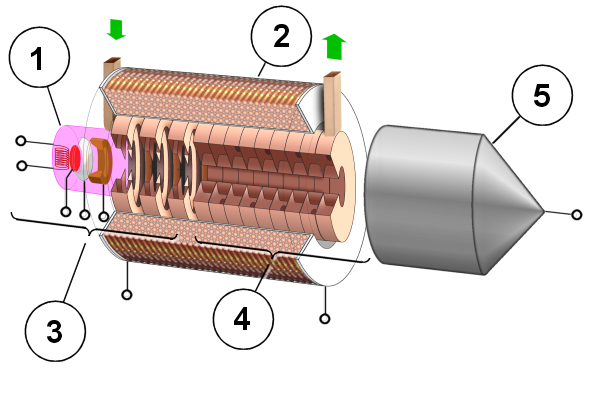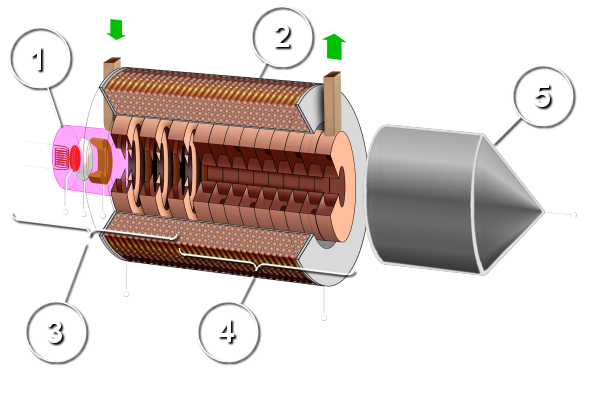Twystron

Figure 1: Fundamental construction of a twystron
① electron gun; ② solenoid; ③ klystron part; ④ TWT part; ⑤ collector

Figure 1: Fundamental construction of a twystron
① electron gun; ② solenoid; ③ klystron part; ④ TWT part; ⑤ collector

Figure 1: Fundamental construction of a twystron
① electron gun; ② solenoid; ③ klystron part; ④ TWT part; ⑤ collector.
(interactive picture)
Twystron
The Twystron is a velocity-modulated linear beam vacuum tube for use as high-pulse-power amplifier. It consists of a multicavity klystron driver section and a traveling wave tube output stage. Its name derives from: twt and klystron, which is the Varian Associates registered trade name. The advantages are a relatively flat gain response over the entired bandwidth. Twystrons provide the broadest bandwidths of all high-pulse-power microwave devices. They are manufactured for operation in S- and C-Band and have pulse power ratings of 10 to 38 Megawatts, gains of 35 to 50 decibels, and efficiencies of 35 to 40 percent.
In a Twystron, the electrons emitted by the electron gun first pass through the klystron “Buncher” resonators, where they are grouped into bunches, as in a conventional klystron. They then pass through the system of coupled resonators, where they excite a traveling wave, as in a conventional traveling-wave tube. The use of the slow-wave-structure of coupled resonators increases the operational frequency bandwidth to 7 up to 15 percent of the mean frequency.
Twystrons were developed in the USA in the 1960s by Albert D. La Rue and Rodney R. Rubert, employees of the company Varian Associates Inc. The tubes are used chiefly as transmitters in high-power radar installations, e.G. in later modifications of AN/TPS-43 and earlier versions of AN/TPS-70. However, they are very complicated and expensive to manufacture. Twystrons were later replaced by Extended Interaction Klystrons (EIK).
